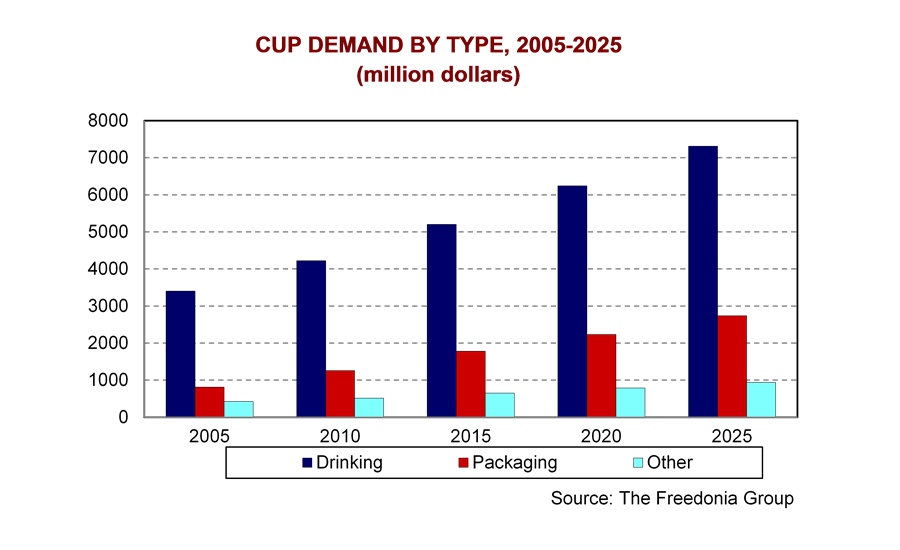Demand for cups and lids in the U.S. is projected to expand 3.9% per year to $10.6 billion in 2020. Gains will be supported by food trends that favor convenience and smaller portions. Unit demand will be helped by the growing focus on specialty beverages among foodservice operators and the expansion of food menus to include soup, oatmeal, and other sides. Preference for premium coffee and fruit beverages will bolster value gains as these drinks typically use more expensive cups and lids to accommodate whipped toppings or showcase the beverage’s color. These and other trends are presented in Cups & Lids, a new study from The Freedonia Group (freedoniagroup.com), a Cleveland-based industry research firm.
Packaging cups will post the fastest gains through 2020, primarily due to the fact that products packaged in cups typically are smaller portions, positioned specifically to appeal to the time-conscious consumer. According to analyst Katie Wieser, “As it becomes more common to snack throughout the day rather than prepare meals, healthy foods that are pre-packaged and portable will continue to gain favor.”
Packaging products in this way can also drive revenues for food manufacturers, as it allows items to be sold at a premium. Fresh fruits and vegetables have seen some of the largest gains attributable to this trend. Cups used for coffee and tea will see the fastest growth of any major packaging market, and cups for dairy products will continue to show favorable increases due to the popularity of premium yogurt.
Drinking cups made of paper, plastic or foam hold the largest share of this market. Gains for drinking cups will be slightly smaller than the cup and lid average due to the maturity of many applications. However, demand for hot beverage cups will see healthy gains, driven by the popularity of premium coffee and the use of high-value insulated paper cups. The mix of raw materials has changed considerably over the past decade, primarily for environmental reasons, as a number of foodservice chains have transitioned away from polystyrene foam and some cities have introduced bans on the sale or use of this foam. The largest beneficiary of these changes has been the paper cup, which is expected to show the fastest gains through 2020 and will continue to hold the largest share of the drinking cup market. There has also been wider use of clear plastic cups, which allow for greater visibility of the beverage.

